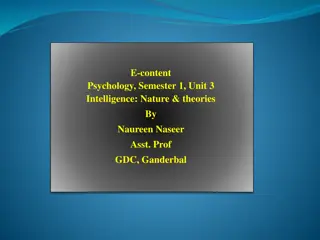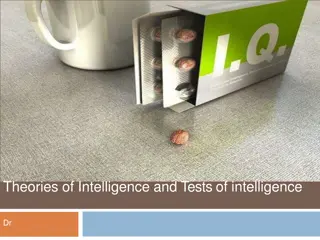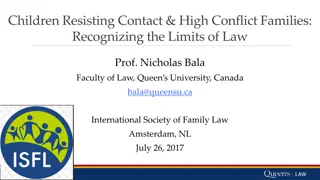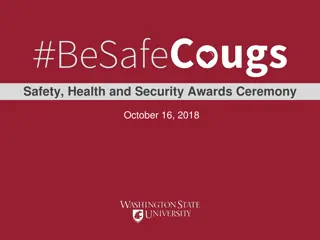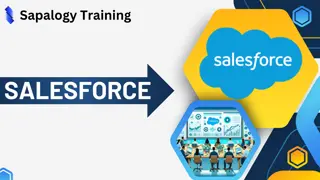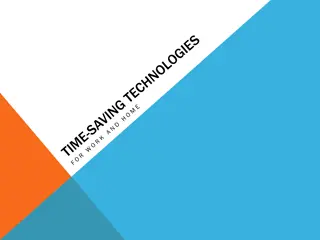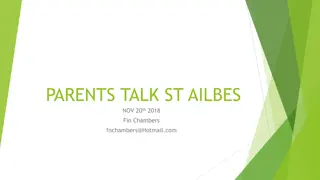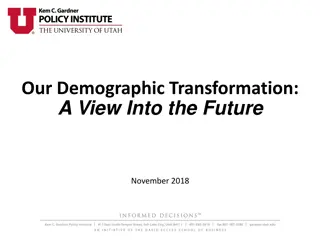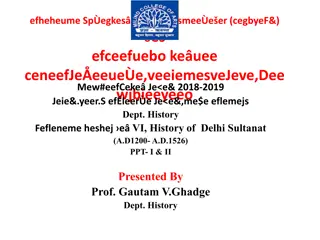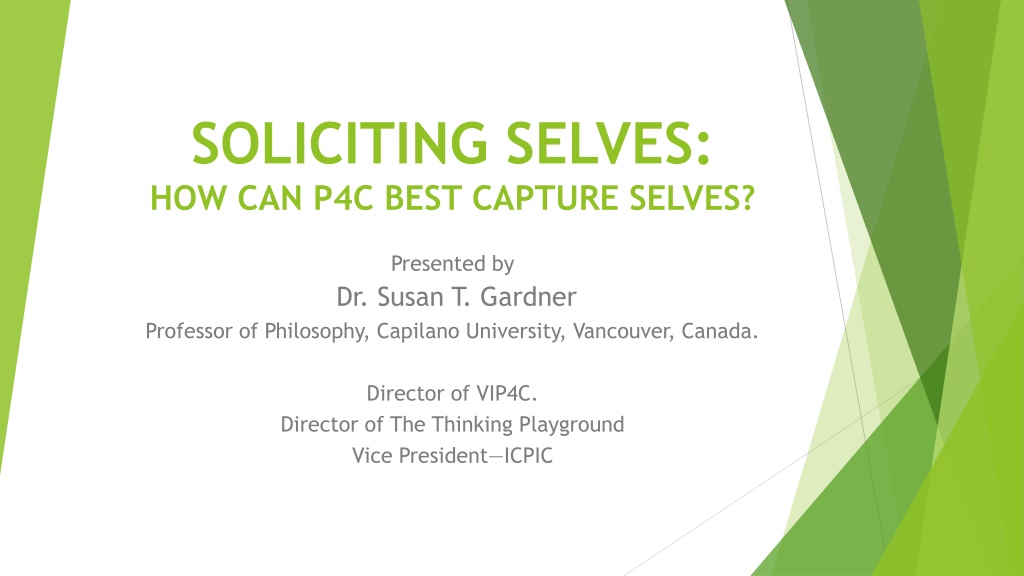
Capturing Selves: Exploring P4C for Self-Transformation
Delve into the concept of self-transformation through Philosophy for Children (P4C) as presented by Dr. Susan T. Gardner, discussing the goal of educating selves and the role of moral education in shaping individuals.
Download Presentation

Please find below an Image/Link to download the presentation.
The content on the website is provided AS IS for your information and personal use only. It may not be sold, licensed, or shared on other websites without obtaining consent from the author. Download presentation by click this link. If you encounter any issues during the download, it is possible that the publisher has removed the file from their server.
E N D
Presentation Transcript
SOLICITING SELVES: HOW CAN P4C BEST CAPTURE SELVES? Presented by Dr. Susan T. Gardner Professor of Philosophy, Capilano University, Vancouver, Canada. Director of VIP4C. Director of The Thinking Playground Vice President ICPIC
IS THE GOAL TO EDUCATE SELVES, OR NOT? There are many reasons for implementing an education program. One might want to educate so that students acquire a keen sense of history. One might want to educate so that students become expert computer programmers. One might want to educate so that students acquire a skill such playing golf or riding a horse. In all of the above, though we assume that the student will benefit from these educational opportunities, we also assume that students themselves, as the persons they are, will be essentially the same after the educational experience as they were before.
IS THE GOAL TO EDUCATE SELVES, OR NOT? If, as an educator, your goal is to empower selves so that they are better thinkers in the sense of being ever more in charge of their own lives and the persons they are becoming, then your agenda can be described as engaging in moral education in a deep sense. If this is the case, your goal is to educate selves. It is important to keep in mind that even those who strive to implement some type of moral education may not actually be striving to educate selves. Given that so many educative strategies are attempts to add-on to selves rather than to transform them, some in moral education might follow the same path.
IS THE GOAL TO EDUCATE SELVES, OR NOT? A good analogy here is a driver education program. Students are told that, when they drive, they should never go above the speed limit. They might even be told that they will get a hefty fine if they get caught speeding. But to assume that this has a major impact on the driving habits outside the classroom is na ve. Similarly, in 2014, a panel of Stanford scholars when asked Does Teaching Ethics do Any Good ? responded that ethics classes cannot be expected to make students more ethical. The moral is that to have a real impact on student behaviour, what is needed is an education that focuses on self transformation.
Assumptions going forward. I am assuming here that our inquiry today about self transformation is taking place within the larger inquiry of how Philosophy for Children (P4C), as an educative strategy, can be used to engage in that endeavor. Note: there are a lot of other reasons to engage in P4C, e.g., enhancing critical thinking. I am also assuming that participants are familiar with the Community of Philosophical Inquiry (CPI), the anchoring pedagogical strategy of P4C. Given the above two assumptions, it may be helpful to know from the start that, in what is to follow, the case will be made that if self- transformation within the confines of a CPI is the goal, then there is one necessary condition that must be met to progress toward that goal and that is that selves, not just talking heads, must be solicited to join the party.
IF STUDENT TRANSFORMATION IS THE GOAL, THEN THIS REQUIRES THAT SELVES BE PRESENT. Everyone in this classroom is a robot except for one, and you know who that is! This introductory comment works well when teaching about the mind/body problem in a philosophy class because it lays bare the fact that selves are invisible. We need to remember that the bodies of students may be present, but their selves may not be. What is being suggested here is that if you want to educate for self- transformation (as opposed to enhance knowledge or critical thinking or engage in cognitive upgrading), you need to ensure that selves at least show up, so that the possibility of educating selves can indeed take place. Since the selves of others are invisible, we need to ask ourselves how we can ever know for sure when and if selves are present. And worse: How can we even know when we ourselves show up?
NECESSARY CONDITIONS FOR EDUCATING SELVES. It will be suggested here that to educate selves, it is critical that (i) Educators summon selves to the table; (ii) Educators ensure that students feel themselves as seen and, for that reason, stick around; (iii) Educators themselves show up for captured-engagement. In other words, it will be argued that for an educational enterprise to be self-productive, strategies need to be undertaken to ensure that all parties are truly present, in mind as well as in body. It is of note that the assumption here is that even though a CPI is thoroughly dialogical, and even though there is a lot of talking going on, selves can still be absent unless particular care is taken to call them to the table. We will deal with these in turn.
i. SELVES NEED TO BE SUMMONED Number i in turn, is divided into a, b, c Summoning selves to a CPI requires (a) The question must be a real question (one that will be referred to as a through-and-through question ); (b) The question must be contentious (one that will be referred to as a trapeze question ); and (c) The question must be one about which participants genuinely care (rather than being some academic exercise). Reminder again: there are many different purposes for engaging students in CPI s other than student transformation, e.g., enhancing reasoning skills (NJRS).
(a) The question must be a real questionor what could be called a through-and-through question. The question must be a real question for BOTH the participants AND for the facilitator. Avoid fake questions. Students are usually pummeled with fake questions, i.e., questions which are traps to see if the victim s answer matches up to that of the poser. In such situations, students will protect themselves from ridicule by limiting self-exposure. They will keep who they really are hidden from view. Avoid general moralizing questions, e.g., Is bullying bad? or Is it OK to cheat on an exam? ; i.e., these are conscious or unconscious attempts to insert values; students will recognize that that these are not real questions. They won t show up if they think they are being manipulated. Avoid hidden moralizing questions, i.e., questions about which particular facilitators have fixed views. Thus, for instance, hard core animal rights vegans ought to avoid attempting to facilitate an inquiry into the question of whether or not it is OK to eat meat or put animals in zoos. The facilitator should ask herself: Is this a real question for me?
(b) A trapeze question. Gadamer (2004) notes that the questionability of a question is a function of whether it can clearly elicit reasonable support for both sides of an issue. Peter Worley, of The Philosophy Foundation in the UK, argues for a conceptually open but grammatically closed question, i.e., one to which one could imagine participants answering either yes or no (versus open question like: What is friendship? ). These are questions on which one must take stand on one side of the trapeze, e.g., the infamous trolley car dilemmas: would you push a person onto the track if such an action would stop a runaway trolley that was about to dismember five others? Since you must answer yes or no, you have to commit yourself. It is of note that, in his book Moral Tribes (2013), Joshua Greene outlines in detail that various MRI s done of people presented with this and similar scenarios clearly showed a self in conflict with itself, i.e., the self is present. The phenomenological feel of a good question is that of a trapeze.
(c) A question about which participants care. In order for selves to come to the table, they must have something at stake. They must perceive that the answer to the question under discussion will make a difference in their lives. Charles Sanders Peirce notes that thinking requires a genuine sense of doubt about one s own position. John Dewey notes that thinking only begins in what may fairly be called a forked-road situation. So, unless participants are already on the road for which the question creates a fork, or unless the possibility of a swing to the other side seems genuinely troubling, there will be no self-investment. Thus, abstract questions such as Are numbers are real? or Can this child s squiggle be considered art? may be interesting exercises in swinging thinking around, they will nonetheless leave the self untouched. As Dewey notes, General appeals to a child (or to a grown-up) to think irrespective of the existence in his own experience of some difficulty that troubles him and disturbs his equilibrium are as futile as advice to lift himself by his boot-straps.
Summary of SELVES NEED TO BE SUMMONED If the goal is student transformation, then it is suggested that a Community of Philosophical Inquiry be anchored in a question that has the following characteristics. (a) A question that is a real question a through-and-through question i.e., a question about which neither the student or facilitator knows the answer); (b) A question that is contentious or a trapeze question ; and (c) A question about which participants genuinely care (rather than being some academic exercise).
ii. TO ENSURE THAT SELVES STICK AROUND, THEY NEED TO FEEL SEEN Once selves have been summoned to the inquiry by through-and-through trapeze questions that focus on issues about which participants genuinely care, it is critical that the facilitator, thereafter, engage in communicative moves of the sort that entice participants to stay at the party. In order to ensure that participants feel seen and hence stick around, it will be suggested that the facilitator ought to (a) question for clarity, (b) question for depth, and (c) respond for connection. We will deal with these in turn.
(a) Questioning for clarity. As a facilitator, if you don t understand what a participant of a CPI has said, others probably have a similar problem. However, if the viewpoint of that participant is not understood, then s/he has been unsuccessful in making herself visible. For that reason, it is suggested that if an offering is unclear, the facilitator ought to keep questioning until that individual is satisfied that the heard message is what s/he meant. There is a worry that such facilitator involvement may prompt participants to speak to the facilitator rather than to the group. This is why whether soliciting selves is the goal is such an urgent question. If the goal of the CPI is primarily to enhance critical thinking powers, then having a lose rein except to correct argumentative errors seems warranted. However, if educating selves is the goal, then capturing selves as they begin to appear by enhancing their clarity is essential, even if this requires the facilitator s active involvement.
(b) Questioning for depth Keep in mind that the goal here is to get a glimpse at the utterer! Gadamer says that understanding is always more than merely re-creating someone else s meaning ; that a person who wants to understand must question what lies behind what is said, until s/he moves into the horizon of the other. A good strategy is to ask a second why so as to inquire how what is said (or done) fits into the pattern of who the person intends to become. As long as the facilitator recognizes that person-perception is part of her mandate, then she will not be reticent to question in a way that, in more traditional academic circumstances, might seem inappropriately personal. This, along with other strategies (such as making it a cardinal rule that everyone know everyone else s name) will help create an environment in which participants recognize that their selves are welcome.
(c) Responding for connection Daniel Siegel, writing from the point of "Interpersonal Neurobiology (IPNB)," i.e., a field that studies how interpersonal interaction affects the structure of the brain, argues that interpersonal communicative interaction both early in life and throughout adulthood play a central role in shaping the brain and, along with it, the ever-emerging mind. What is important is that we are involved in contingent communication by which he means that we respond to one another in a way that suggests that the other is seen as having an internal centre of subjective life worthy of attention; that, in communicating with the other, we are attempting to see the other s minds what Siegel refers to as mind-sight. So, if educating selves is the goal, facilitators need not be reticent to respond in a ways that says simply I hear you. It is perfectly legitimate for facilitators to say e.g., So you are telling me that , or so you disagree with John when he says . . . , before passing it off to the rest of the group to respond.
Summary so far The moral of all of the above is that, if the transformation of selves is part of the goal of the enterprise, then the responsibility lies with the facilitator not only to summon selves to this communicative adventure, but to be involved in such a way that selves stay engaged. This will require much more than simply being a gate keeper for whose turn it is to respond, and much more even than ensuring that the quality of thinking is maintained. It is important for the facilitator to be keenly aware of the importance of selves, not merely talking heads, getting involved, to know how to summon and maintain a self-welcoming atmosphere, which ultimately requires not only questioning for clarity, questioning for depth, and responding for connection, but as well that the facilitator bring herself to the party. It is to that topic that we shall now turn.
iii. EDUCATORS NEED TO SHOW UP Neufeld and Mate argue in their book, Hold On To Your Kids (2005), that we adults are losing the power to hold on to our kids precisely because that power comes not from technique, but from the quality of the adult-child relationship that is presently under threat due to both parents working, divorce, mobility, technology, etc. They also bemoan the lack of focus on attachment in departments of education; that educators learn about teaching subjects but not about the essential importance of connected relationships. What matters is not the skill but the relationship. Attachment is not a behavior to be learned but a connection to be sought. But relationship is not possible if we cannot see our students, or they cannot see us. Once one has gleaned all one can about what a CPI is all about (this is important), a facilitator of a CPI must then show up as the person s/he truly is: as the person who laughs at what is funny, as the person who is surprised even shocked by what is surprising or shocking, and generally as the person who is clearly intent on being herself, so that others, too, may be comfortable in bringing themselves to the table. The corollary is that every facilitator will be utterly different from any other that every facilitator s approach will be unique.
THE RISK OF BEING PRESENT Students should welcome this approach. Yes? Not necessarily. Leaving behind an old self attached to old ideas is a treacherous business. When one jumps off a trapeze platform, it is not inevitable that one will land on the other side safely. This is uncertain territory, and recent findings in neuroscience have confirmed that most of us abhor uncertainty. Thus, more than the above may be required to coax selves into the educational arena. We may need to add to our arsenal an explanation on why agency is important and/or why autonomy (through self-transformation) is imperative for the very existence of the self. For now, though, the overall take-home message is that the mere presence of bodies does not indicate the presence of selves, and that mere talking in no way indicates engagement. So, if educating selves is a goal, then it is the responsibility of the educator to create a communicative environment that will be conducive for selves to show up and to stay at the party. It may not work always, but it will almost always work sometimes which, in and of itself, is something to be celebrated.




